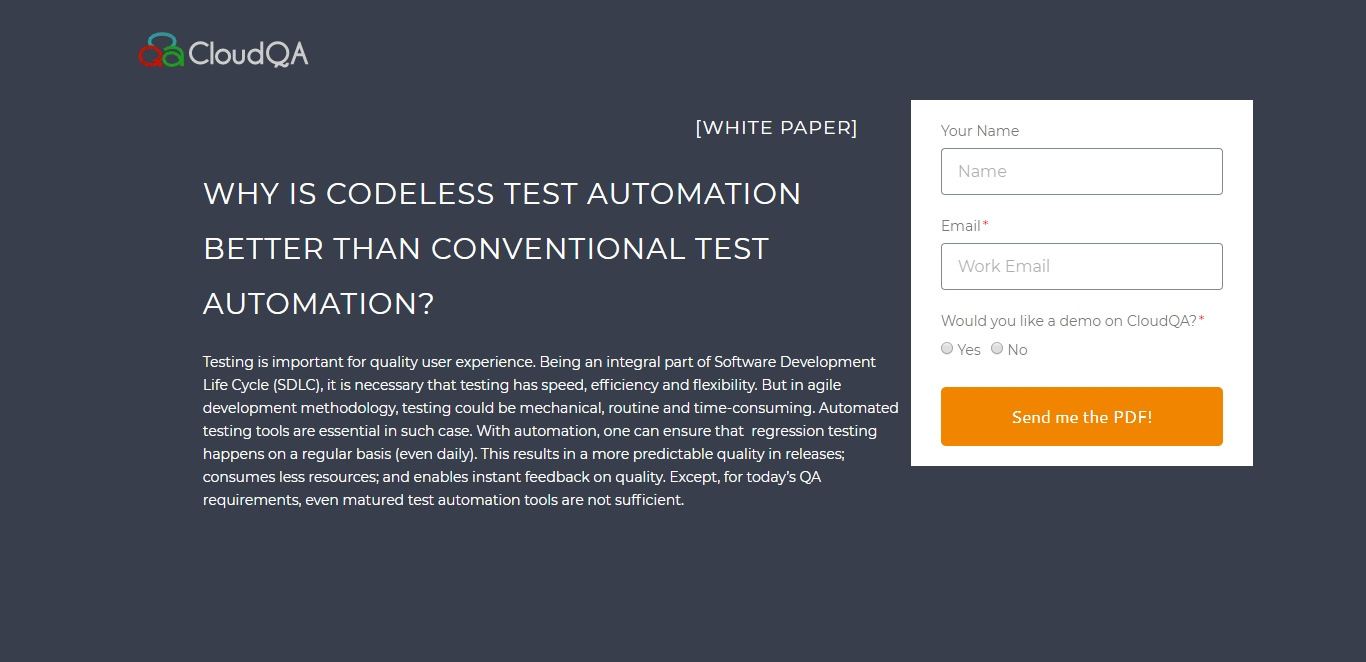What is Synthetic Monitoring and Why use it
Synthetic Monitoring is a simulation of user actions on a web application in order to record functional and performance metrics. The user actions can be simulated for various web browsers and geographical locations. Monitoring is then configured to run at regular intervals which enables continuous analysis.
In short, Synthetic Monitoring is a proactive analysis of web application to mitigate losing users due to a bad experience.
Why Synthetic Monitoring

In the past 10 years, web applications have become more sophisticated. We see a greater push for interactive content, responsive design, third-party services, and technologies like Single Page Applications. These advances are considered essential for a successful web application today. However, complexity with limited time to deploy has increased challenges in maintaining a quality user experience.
Let’s look at a fictional case for a better understanding of how Synthetic Monitoring can really save a business from desperate situations:
Sally is the founder of a 4-year-old ecommerce startup. Their website users have grown multi-fold during the past year; increasing by hundred thousand users. The holiday season is around the corner and retailers have started gearing up for this opportunity. So is Sally, as she anticipates the seasonal sales to account for as high as 30% of their annual sales. Sally senses tough competition and plans to release a new feature to apply promo-codes for discounts. In order to meet tight deadlines their development team work day and night building this feature. In the end, they were successful in rolling it out before the Holidays.
It’s the Holiday season and her loyal customer rush in early to grab the deals. Filling up their shopping carts, when they applied the promo-code the site would just stop responding. Shoppers got frustrated and left the site to purchase products elsewhere. Jennifer who is one of the frustrated users tells all her friends about this.
The promo-code feature was a critical workflow which failed to perform at the user end. Had Sally used Synthetic Monitoring for this critical workflow she might have corrected the issue in time.
User expectations are rising, and they don’t tolerate any glitches or slow performances. Presence of alternatives makes it easy for them to abandon a web app with quality issues. Bad user experience affects the user’s impression of a brand. For ecommerce sites, Akamai reports 75% of online shoppers who experience glitches, crashes, or long loading time, will not purchase anything. A prudent quality analysis can reduce the probability of substantial losses.
Having performance metrics plays a key role in strengthening quality. Prompt metrics like availability, error rates, and load times help attain quality with higher velocity. But having such metrics is only possible with Synthetic Monitoring.
In an event of a functional failure, unavailability or slow performance, a Synthetic Monitoring tool alerts dev teams to take quick actions. Undoubtedly, Synthetic Monitoring is required in situations where the risk of loss is considerable due to the poor user experience.
Here are a few insights available from Synthetic Monitoring:
- 24×7 performance and availability analysis
- Understand the impact of third-party services
- Know the precise reason for an issue
- Check web services that use APIs
- Verify availability of critical workflows
- Measure Service-Level Agreements (SLAs)
- Analyze performance across geographical locations
Windup
Web complexity and user expectations will continue to rise. Synthetic Monitoring is more relevant today to help deliver quality user experience. The ROI is high for the companies who need their digital experience to be ideal at the user end.
LIKE THIS POST SHARE IT WITH YOUR FRIENDS
RECENT POSTS
Guides

How To Select a Regression Testing Automation Tool For Web Applications
Regression testing is an essential component in a web application development cycle. However, it’s often a time-consuming and tedious task in the QA process.

Switching from Manual to Automated QA Testing
Do you or your team currently test manually and trying to break into test automation? In this article, we outline how can small QA teams make transition from manual to codeless testing to full fledged automated testing.

Why you can’t ignore test planning in agile?
An agile development process seems too dynamic to have a test plan. Most organisations with agile, specially startups, don’t take the documented approach for testing. So, are they losing on something?

Challenges of testing Single Page Applications with Selenium
Single-page web applications are popular for their ability to improve the user experience. Except, test automation for Single-page apps can be difficult and time-consuming. We’ll discuss how you can have a steady quality control without burning time and effort.

Why is Codeless Test Automation better than Conventional Test Automation?
Testing is important for quality user experience. Being an integral part of Software Development Life Cycle (SDLC), it is necessary that testing has speed, efficiency and flexibility. But in agile development methodology, testing could be mechanical, routine and time-consuming.






